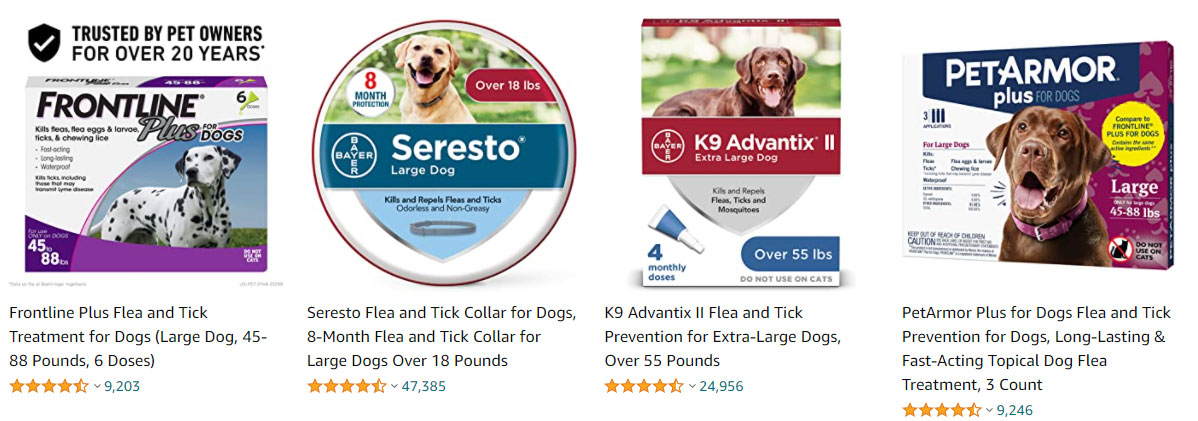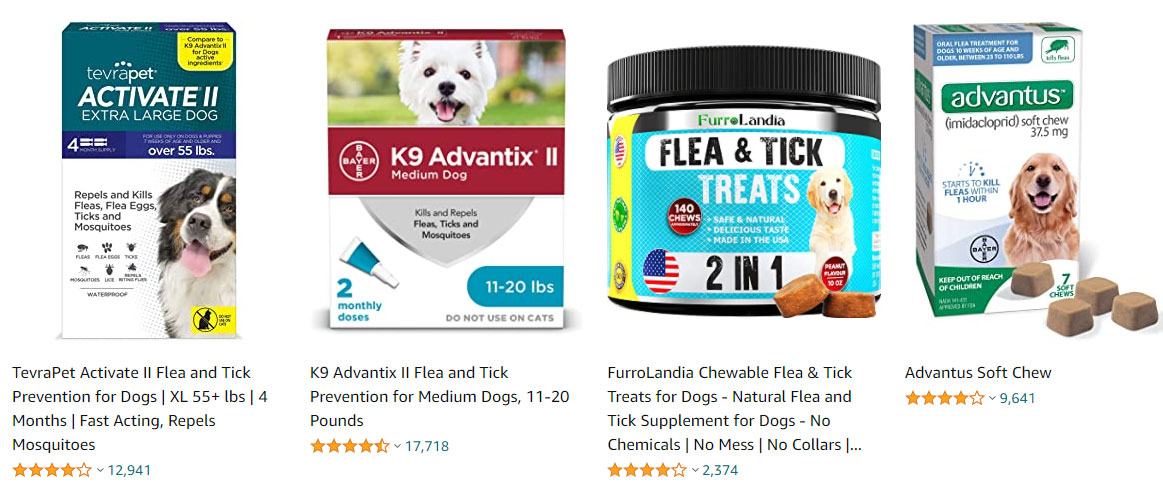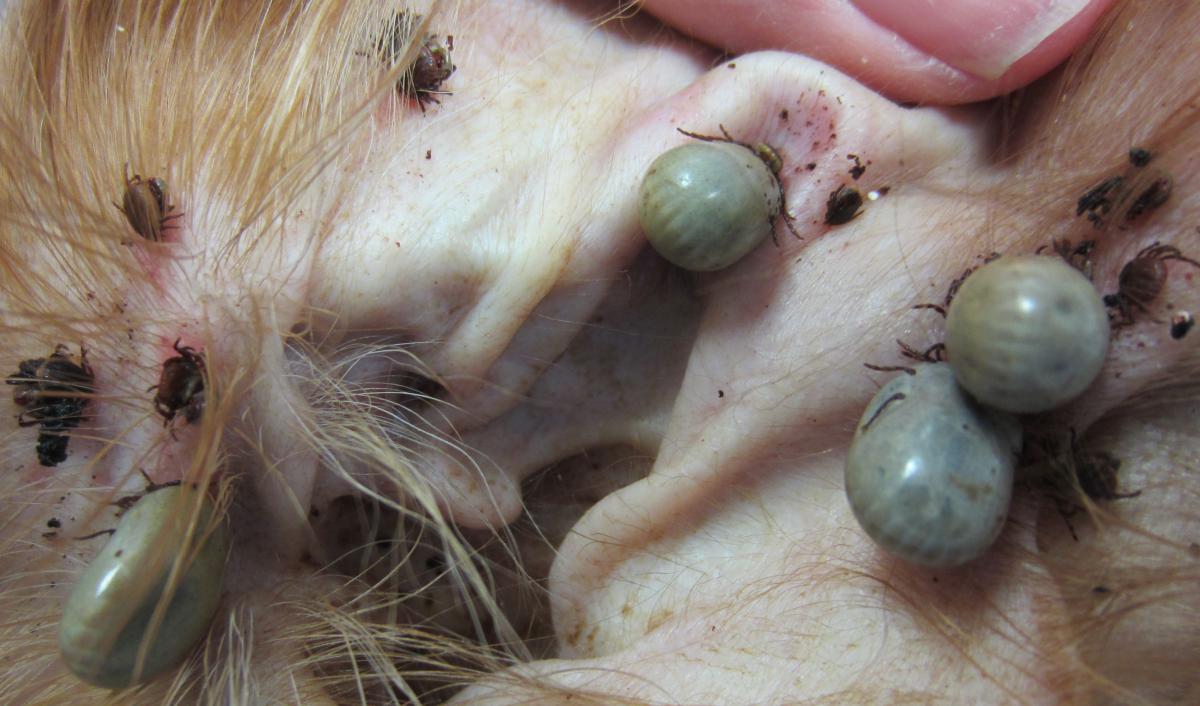Fleas and ticks for dogs
Fleas and ticks are without a doubt the worst enemies of our four-legged friends! Carriers of potential diseases, it is important to anticipate any bite in order to avoid potentially serious health problems for your dog in the future...
In this article, we focus on the risks of tick and flea bites, the symptoms of diseases that you should learn to detect, and of course the possible treatments in case of any infection.
A word about ticks
The tick is an external parasite that belongs to the ixodidae family. In this article, we will talk about the danger that the tick represents for canines. The tick loves to cling to the dog's coat while walking in the countryside.
It likes warm and humid places such as the paws (often between the pads), the folds of the ears and sometimes even in the groin. Once hooked on the coat, it goes up the hair to reach the skin and pricks it. Finally, once fixed on the skin of our companion, it feeds on its blood.
Unfortunately, it is possible that some of them, carrying bacteria, introduce parasites responsible for serious diseases such as piroplasmosis or erlichiosis. Ticks are most prevalent in the spring and summer (March to October). Fortunately, not all ticks carry disease.
Ticks can cause more or less serious problems.
• If the tick is not a carrier of serious bacteria: it can create an infection at the site of the bite (especially if the head has not been properly removed). • If the tick is a disease carrier: ticks can transmit serious diseases such as piroplasmosis (or babesiosis). This disease, if not caught in time, can be fatal for the animal. The disease can occur in an acute manner. The animal will be very depressed, a rapid loss of weight will appear, a significant hyperthermia. The main symptom will be anemia (pale mucous membranes) or jaundice (yellow mucous membranes). The color of the urine may also change (it will be darker than normal). Unfortunately, if the disease is not noticed or caught in time, there may be kidney and liver damage that could be irreversible. Or the disease will present itself in a chronic form. Here, the symptoms will be more discreet but will last over time. Hyperthermia and weight loss will be less important than in the acute form.

Another serious disease caused by ticks is erlichiosis. This one is mostly present around the Mediterranean basin. It can also be fatal for your pet and can also present itself in two phases. The acute phase: during this phase, the animal may be down and have hyperthermia.
You may also notice that your dog has difficulty getting up or walking, which is due to joint pain. This phase, because of its rapidity, may go unnoticed by owners. If no treatment is implemented during this first phase, a so-called "latent phase" is observed.
Sometimes, during this phase, no symptoms are noticed. The animal is a carrier but does not declare the disease. The risk becomes important if the animal is bitten again by a tick because the disease could develop.
In conclusion, ticks can be responsible for serious diseases for our dog friends. Let's not forget that ticks can also be very dangerous for humans, hence the importance of protecting our four-legged friends.
How do they attack your dog?
As for the flea, it is a very small insect (a few millimeters). But don't be fooled by appearances. This small animal jumps very high and very far (up to thirty times the length of your pet). Fleas like ticks are more likely to be present from March to October, except in southern regions where temperatures can be suitable all year round.
They also feed on the blood of our companions. Fleas do not usually carry serious diseases like ticks, but their presence can become a real ordeal for the animal and its owner.

What problems can they cause?
Fleas can be a real problem once your pet is infested. Flea bites are very itchy, so much so that your pet can sometimes hurt itself. A flea reproduces at an incredible rate (it can lay more than 100 eggs per day). Infestation can therefore be rapid.
If the animal is not treated, it will be infested quickly and in the most severe cases, it can be anemic. And yes, fleas suck his blood, so if too many fleas bite him, anemia can be a serious consequence, especially on puppies and kittens (because they are very small).
Fleas can also give our pet tapeworm. The tapeworm is an internal parasite (a worm). But how is this possible? It is very simple. The flea climbs on your dog, feeds on his blood and then makes excrements and lays eggs on him.
Your companion licks himself and ingests these droppings and eggs, and then the tapeworm arrives and develops inside the dog. You can then find, in your house or around his anus like small white grains of rice. This is indeed tapeworm. That's why it is recommended to deworm your pet regularly, especially if it has had fleas.
Fleas & Ticks : What are the preventive measures to adopt to protect your dog ?
To best protect your pet from ticks and fleas, there are several solutions:
• First of all, if you find a tick on your dog, you must remove it as soon as possible. To do this, use a tick hook or tweezers. Insert the hook so that it catches the head and turn it as if you were unscrewing it. Never pull it out in one go, as this could leave the head of the tick in your pet's skin. Once the tick is removed, disinfect the area with Betadine to avoid any infection. If after a few days a lump appears, contact your veterinarian.
• Vaccines: today, there is a vaccine against piroplasmosis. It is important to know that this vaccine is not automatically given when your dog receives his booster shot. It is done separately. To find out if your dog is vaccinated against piroplasmosis, call your veterinarian. If it is not the case and you have to leave or live in a risky area, make an appointment about a month before leaving or in February for people living in a risky area so that in March your companion is protected. Indeed, the vaccine is done in two times: two injections three weeks apart.
However, for erlichiosis there is no vaccine yet.

Pest control products
Collars
These collars are often effective for a long time (up to 7 months depending on the model). But you must put them on correctly to optimize the protection. The collar must touch the skin of your pet without tightening it too much, of course. Make sure your pet can swim with it on, otherwise, remember to take it off when swimming and put it back on afterwards. You may ask, but how can a collar protect my dog's entire body? The collar contains antiparasitic products that are permanently diffused. These products will pass through the skin and therefore protect him completely. Thus, when the flea or tick bites your pet, it will suck up the antiparasitic product and then die and fall off.
Pipettes
They are very effective and easy to apply. It is also important to apply it well in order to protect your pet. They are usually applied between the shoulder blades because it is an inaccessible licking area for your pet. You have to spread the hairs well (the goal being to put the pipette on the skin). Like the collar, the pipette will diffuse antiparasitic products throughout your dog's body. Their effectiveness is often shorter than that of the collar (one month), so use a reminder to renew it in time. Also remember to read the instructions carefully, sometimes it is necessary to wait a few days after a bath or a grooming to apply one. If you have small children or if you are pregnant, it is important not to have contact with the product. In case of contact, wash your hands well. Your pet's hair may appear greasy for a few days, this is normal.
The pills
The latest arrival on the market, it is simple and effective. Most of the time, it is palatable. So, no need to fight with your pet to put a collar or a pipette. Its effectiveness is very fast (a few hours). Some tablets work for a month, others for longer. You just have to be careful to take the tablet that has the right dosage for your dog (in general, it is a weight range).

What to do if my pet is already infested?
Fleas love to lodge at the base of the tail or on the back. If your pet has a light color and a short coat, it will be very easy to notice. You'll see them running around, getting in between the hair. If your pet is dark and has a long coat, it will be more difficult to notice.
A tip: brush him on a light surface (tiles or parquet) and you will see the flea droppings. To be sure that they are flea droppings, take a handkerchief and squeeze them, if the handkerchief becomes red, they are indeed flea droppings (blood ingested and digested by them).
That's it, you are sure, he has fleas, don't panic, solutions exist. Quickly apply an external anti-parasite in the form that suits you best (collar, tablet, pipette...), and above all think about treating your environment. If your companion has fleas, there is a good chance that your house is also infested.
Here again, there are several forms of antiparasitics for the environment, especially in spray or fogger. Fleas love fabrics such as your dog's cushions, the sofa, carpets but also wooden floors (they hide between the boards). Fortunately, there are anti-parasite products to treat your home.
For most of them, it will be important to protect your foodstuffs and leather sofas. You will have to close all the windows, leave the interior doors open so that the product diffuses in all the rooms. You will have to leave for several hours because no living being must be inside the house during the diffusion of the product.
When you return, you will have to open everything, air everything, vacuum, rinse the fabrics. The product may leave a greasy film on the floor for a few days. Plan to do this on a day when the weather is nice, it will be more pleasant.
It is also important to know that fleas can bite us, the humans. If your skin itches and small red spots appear, consult a doctor. Or pharmacist.
If he has ticks
If you see a tick on your pet. As we have seen before, it is necessary to remove it correctly as soon as possible and disinfect the place of the bite. If you are in a high-risk area, the best thing to do is to go to your veterinarian to have the animal checked.
If you have not protected your pet with an antiparasitic, it will be necessary to put it in place quickly. If your pet's general condition deteriorates a few days after a tick bite, consult your veterinarian quickly. He will put a treatment in place that will have a much better chance of working if the disease is caught early.
Loving and educating your pet also means protecting it against the hazards of life. This is why we strongly recommend that you take out health insurance as soon as possible. This will save you astronomical veterinary fees in case of accident or illness.


